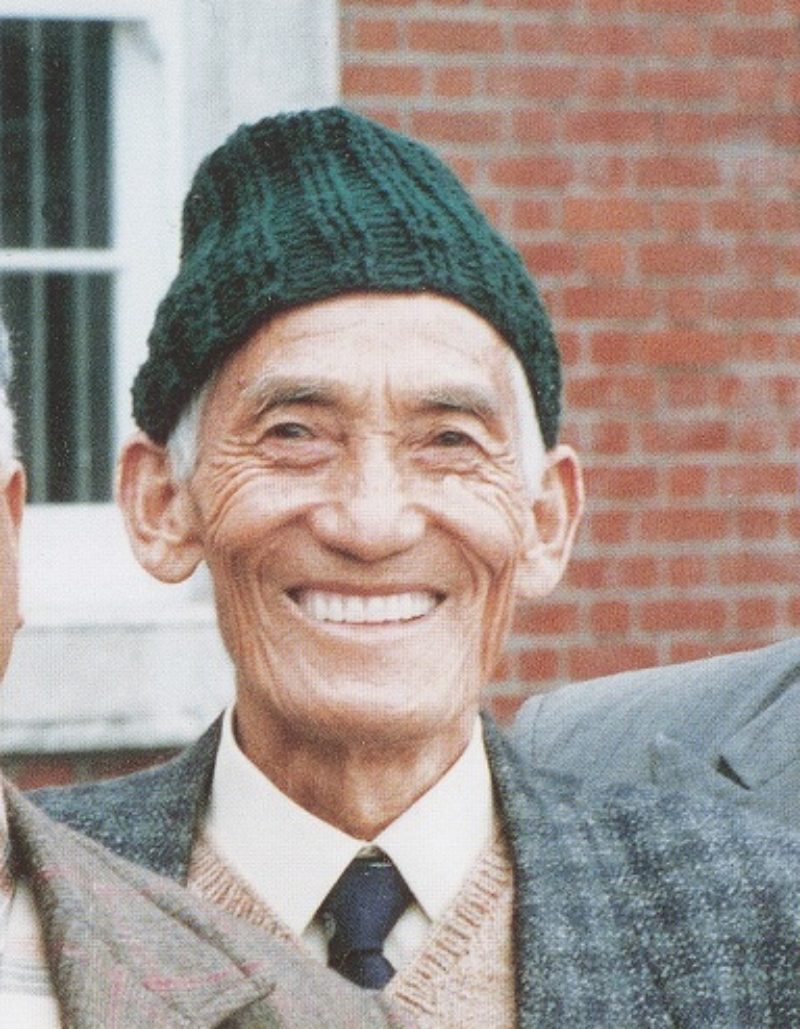Gurkha V.C. In Burma – Agansing Rai.

Gurkha V.C. In Burma – Agansing Rai.
Agansing Rai was born in 1920 and recruited into the 5th Royal Gurkha Rifles (Frontier Force) in 1941. He rose to become a section commander with the 2nd Battalion of 5RGR during action in the Chin hills of Burma in 1943 and 1944. In June 1944 his battalion, part of the 17th Indian Division, was under pressure traying to stem the Japanese advance on Imphal by their 15th Army. The battalion operated around the area of Bishenpur, and on the morning of June 26th 1944 C Company of 2/5RGR was ordered to retake two positions, ‘Water Piquet’ and ‘Mortar Bluff’, from the Japanese, who had captured them in the previous days (the latter only after a staunch defence by a number of soldiers under Subedar Netrabahadur Thapa the day before, who was posthumously awarded the V.C. for his actions). Water Picquet overlooked Mortar Bluff from about 200 yards away and both positions mutually supported the other, so capturing both was a necessity. The positions were bounded on one side by dense jungle but on the others by bare and open ground, up a slippery ridge, with the last 800 or so yards in full view of the enemy, in addition, about 80 yards before the positions, a false ridge stood, leaving this last distance both the obvious point from which an assault would come and completely open for any soldier attacking across it.
Nevertheless, after a preliminary artillery bombardment, C Company attacked, but were pinned down at the false crest by heavy fire from a machine gun at Mortar Bluff and a 37mm artillery piece in the jungle. Naik Agansing Rai, perceiving that any delay would just result in more casualties, instead led a charge towards Mortar Bluff, firing as he went. He himself managed to kill three of the four troops in the machine gun position, and his men, inspired by this followed him and routed the whole enemy garrison at Mortar Bluff. This position came under renewed fire from the 37mm gun so Agansing again led his section in a charge on the gun. Though they lost three men before reaching their objective, they closed with the enemy gun crew, with Agansing killing three of them and his men the other two. The section then returned to Mortar Bluff and along with the rest of their platoon, prepared for the final assault on Water Piquet. During the advance on Water Piquet, an isolated bunker position held by the Japanese cause further serious casualties with grenade and machine gun fire, so again Agansing, covered by his Bren Gunner, advanced alone, with grenade and Thompson sub-machine gun. Through the hail of enemy fire, he reached the bunker and managed to kill all four occupants. This display of calm and courage demoralised the enemy at Water Piquet, and so in a final rush the position was captured.
Agansing Rai received his Victoria Cross from Field Marshal Lord Wavell, the Viceroy of India, on January 23rd 1945, in the same ceremony as the widow of Netrabahadur Thapa. He later returned to the 5RGR regimental centre as an instructor, and would later remain with the Indian Army after 1947, serving as Subedar Major with his battalion in the Congo in 1962-63 as part of the United Nations Force there. On retirement as an honorary Lieutenant he returned to Nepal, where he would die in Kathmandu in May of 2000.

